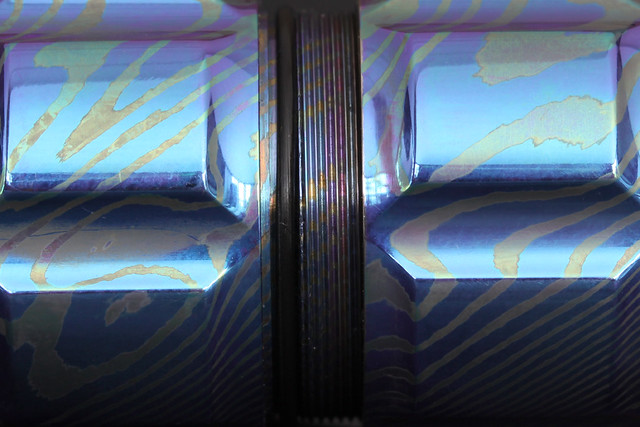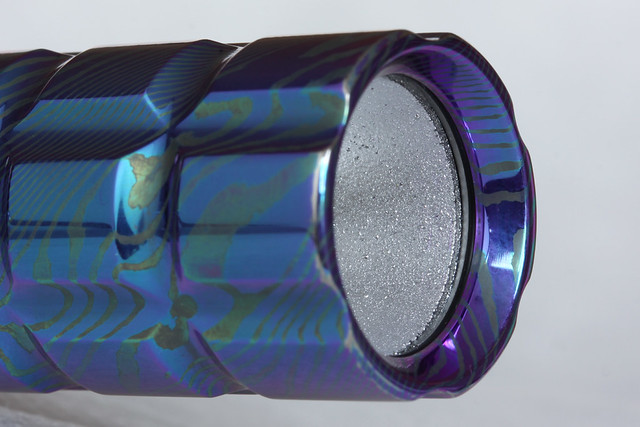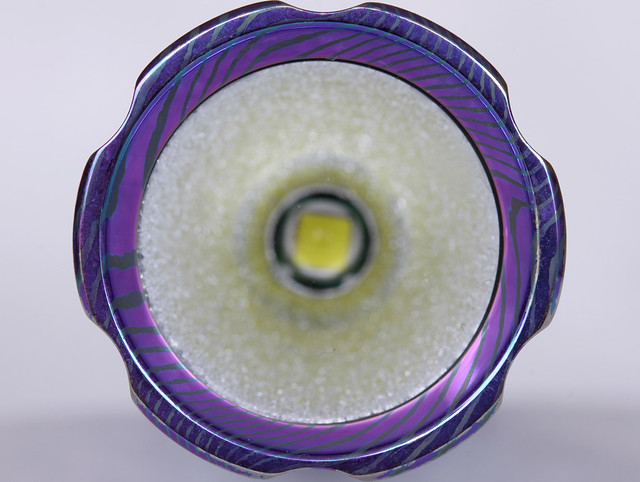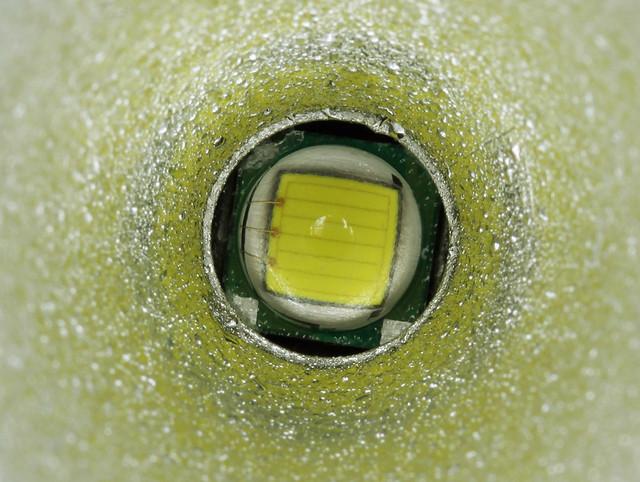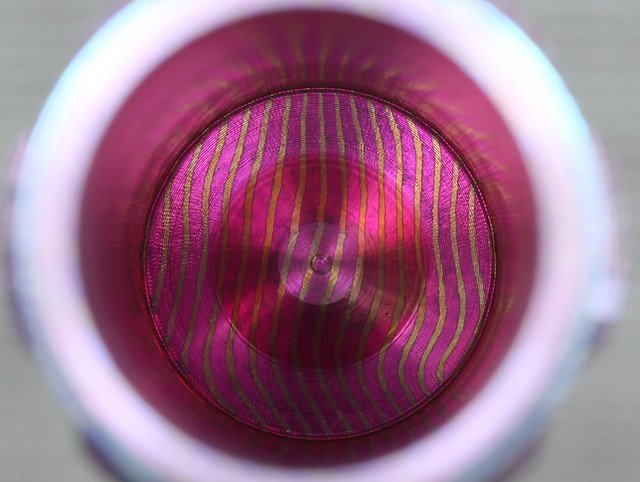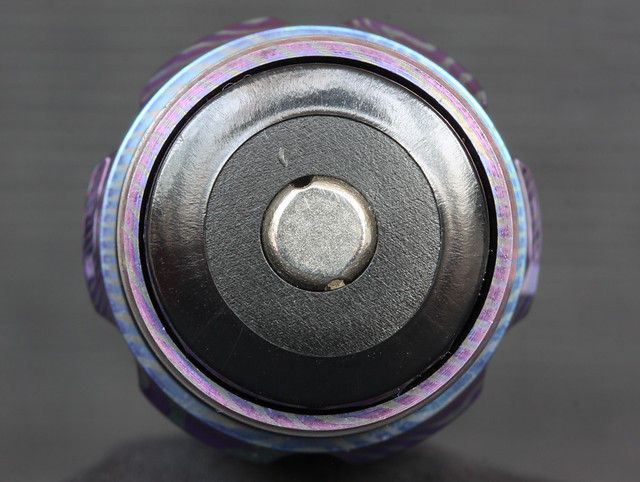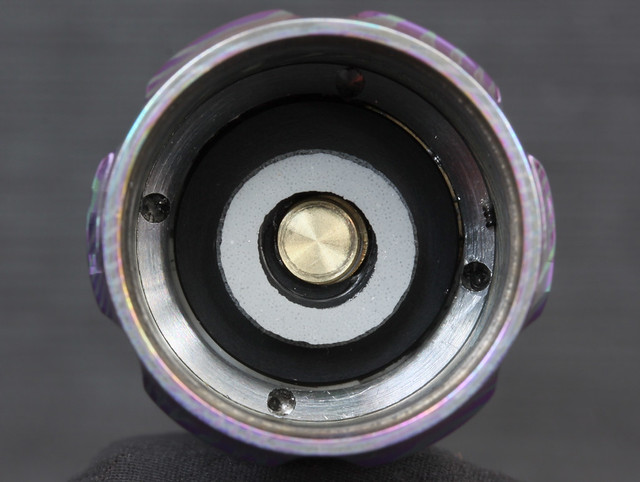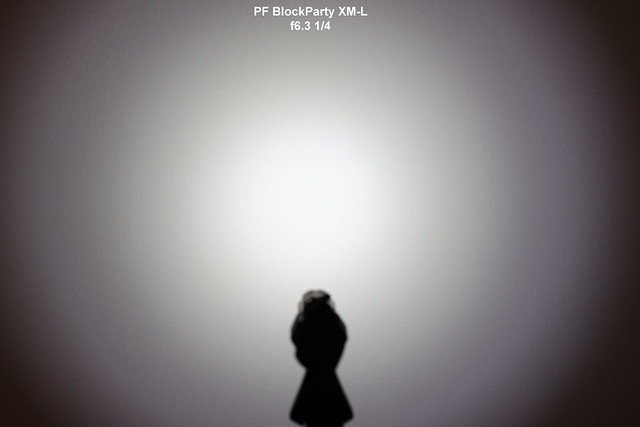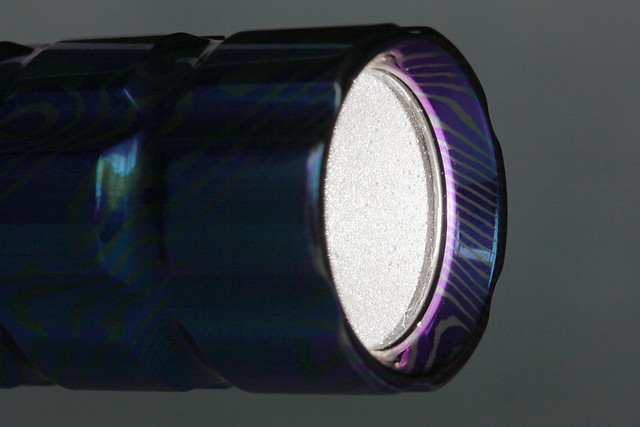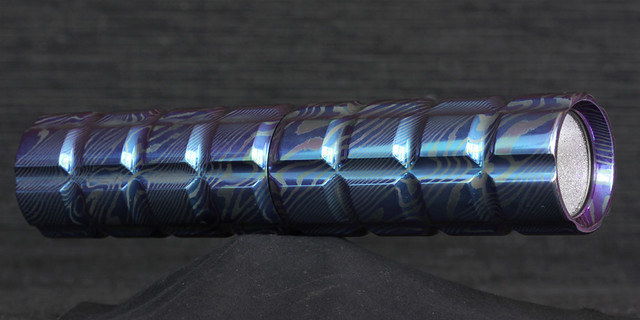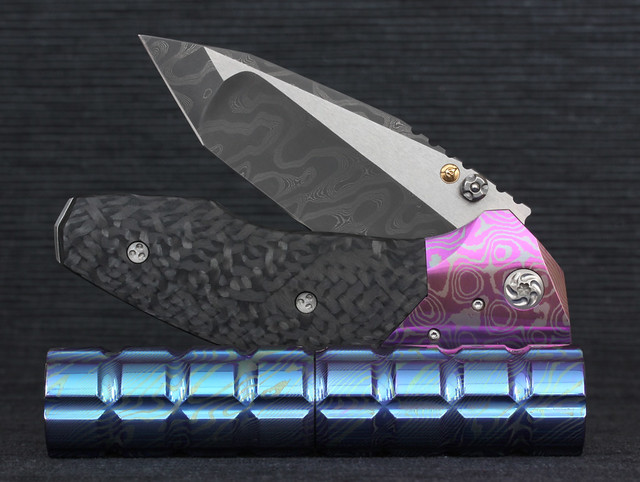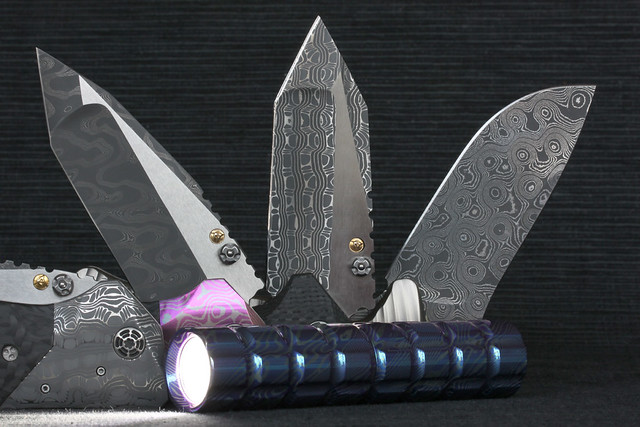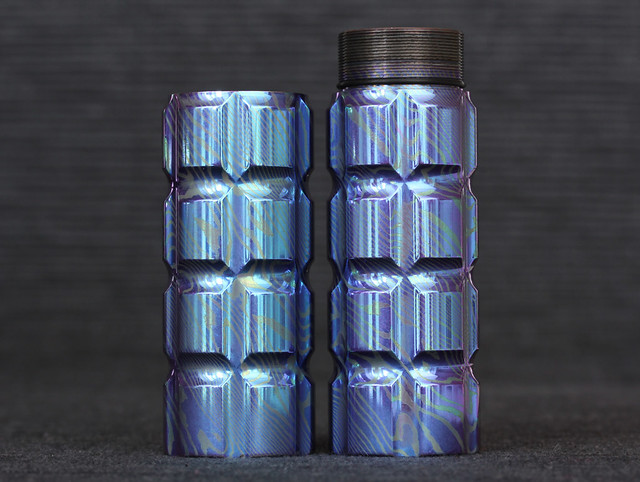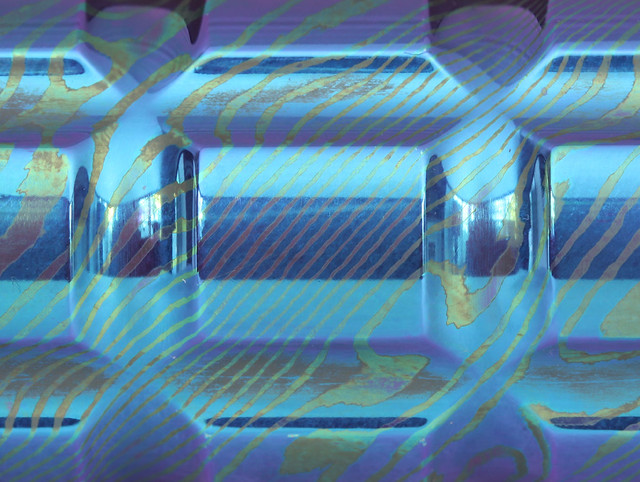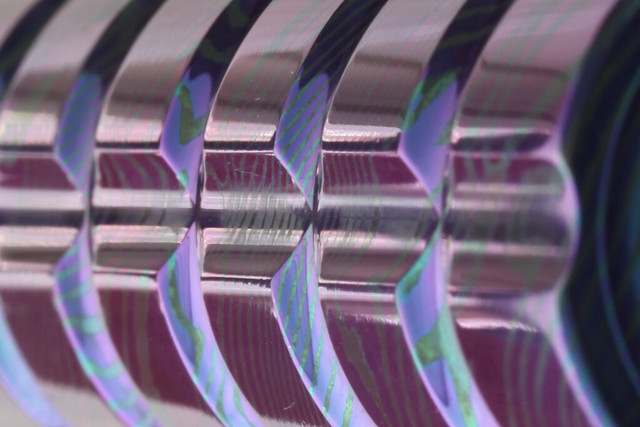Intro
ServasGrußDi aus :austria: Here is the Executive Summary version for my German-speaking friends :buds:
This is the story of Photonfanatic and his love of exotic materials…
:zauber:
Fanatic about Photons
Photonfanatic has been “playing with” things that go bright in the night for quite some time now and he is no stranger to base metals & alloys, having made numerous [flashlight] hosts from stainless, aluminum and Titanium too. He anodized the Titanium, splashed the aluminum, bead-blasted / polished and coated just about everything (using just about everything - PVD, DLC, …).
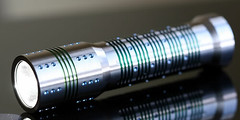

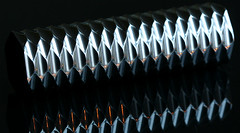
(above photos c/o Photonfanatic)
Photonfanatic decided to try his hand at various forms of damascus. There was Mokume Gane (bi / tri-color, using nickel / copper), then came a wave of Chad’s awesome stainless Damascus (nickel & SS). Once he was done with "plain" damascus, he gave mosaic damascus a try and created something so special that it’s making it’s way around the Country to get photographed :smoking:
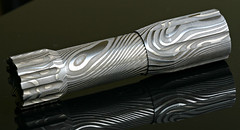
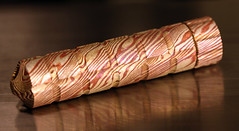
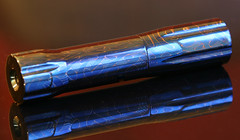
(above photos c/o Photonfanatic)
Next step in the evolution
I asked Photonfanatic about his thoughts on the various Welded Titanium alloys in use by the knife-making community. Little did I know that he already had organized to get a bar of Chad's MokuTi! For those of you who are less familiar with the material, Chad is taking a similar pattern-welded technique used for Damascus and applying it to Titanium. For Mokuti, Chad uses industry-standard 6AL4V Ti and layers it with "commercially pure" (CP) Ti.
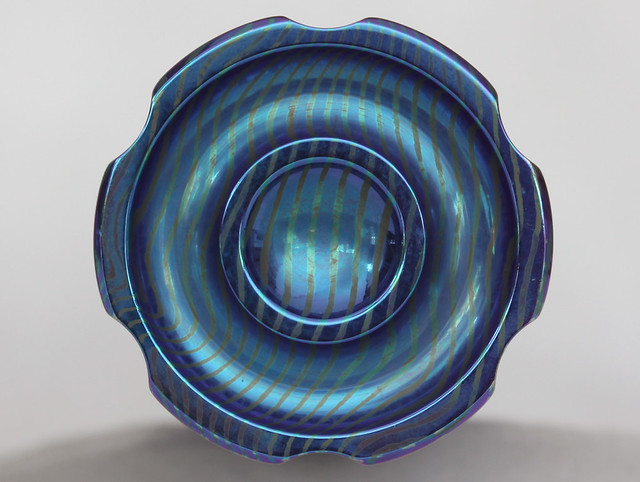
Click-the-pics for hi-res goodness.
Mad Skillz
Photonfanatic has a good eye for design and the skills to bring that design from his mind into reality. Amazingly, he uses very few machines compared to the average modern knifemaker.
New horizons
With every new material comes new adventures; When working with Mokuti, there are so many color variations you can achieve by changing a few variables, like solution, voltage and yes, even surface finish (matte, polished, ultra-polished...). After a few weeks of experimentation, Photonfanatic did manage to sort out what variables would produce certain color ranges but just as importantly, he learned that Mokuti is a beautiful, exotic and unpredictable creature. One can aim for a color-range, but that's as close as you will get with Mokuti...
Base colors are blue and gold, "interference" colors are purple and green...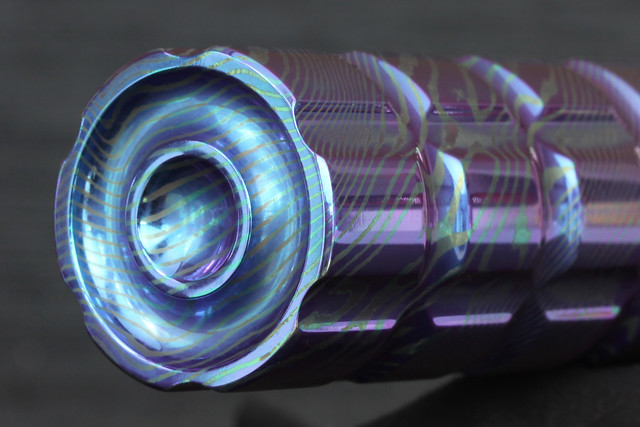
Mad eSkillz
Photonfanatic's hosts are some of the most creative and artistic in the customs-flashlight arena, but he doesn't make hosts, he makes state of the custom-world art flashlights. The Block Party may be stunning to look at, but it is a formidable powerhouse of a light too. First off, some specs:
Host: Chad Nichols MokuTi - welded Titanium (Ti alloy & Commercially Pure Ti), Solution anodized
Length: 120mm (4.7"), diameter: 25mm (1.0")
Weight: 170g (6.0oz) - including 47g 18650
Emitter: Cree XM-L (U2 bin) mounted on a 2mm thick MCPCB (Copper base)
Driver: Three-mode regulated (140mA, 1A, 2.8A), memory mode
Power Source: 18650 Rechargeable 3.7V battery (1)
Reflector: 20mm Khatod, stippled (orange peel)
Output: < 500 lumens (before glass)
Operation: "Twisty"
Other: O-ring seals for water resistance, 2mm-thick mineral glass, silicone gasket (instead of commonplace spring)
While I am no expert in the area of LED flashlights, I'm familiar with the basic principles and will review them for those with a heavier background in knives. Every light has a specific design in mind; illumination of a broad area, of a target area, or a bit of both. This is controlled by several design aspects of a light; the LED type (Emitter), reflector shape, length and surface and the glass ("window"). These properties also affect total / perceived output, along with the driver (which supplies constant current to the emitter) and power source (battery).
Photonfanatic used an XM-L emitter coupled to a relatively hi-current driver, capable of delivering up to 2.8A to the emitter and powered by a 3.7V Li-Ion. Photonfanatic's "Light Engine" (LE) can put out an estimated 500 Lumens. Photonfanatic selected a 3-mode driver (high@2.8A, medium@1A and low@140mA) for this build.
Most modern handheld lights use a side-button or a tail "clicky" or in the simplest form, the modes are controlled by twisting the head ("twisty"). Simply twist the head clock-wise to turn it on, off/on within 1s "toggles" through the three modes. Once left on in any given mode for more than 2s, the driver will "remember" the mode the next time your turn on the light. There are no springs in use; instead, a silicon gasket assures that battery remains secured. Photonfanatic's tolerances don't allow for much play anyways... ![]()
The illumination pattern of a flashlight generally consists of the hotspot, halo and Spill. Photonfanatic chose to make this one a "Wall of light" by using a stippled reflector of a shallow(er) depth. This in turn produces less of a prominent spot and enhances the spill. Thanks to both Photonfanatic's build accuracy and chosen setup, the so-called halo is almost unnoticeable...
Perfectionist
So far so good. Or maybe not. Photonfanatic apparently was not impressed with the fit & finish of the driver, noting that there were visible electronic components on the battery-side as the designers wanted to shave off an additional pcb layer... Photonfanatic machined a piece of delrin to cover the exposed electronics. Furthermore, he decided the factory-installed spring was crap, so he replaced it with a brass button. So when I say this is a custom light, I do damn well mean custom in every possible way... :worship:
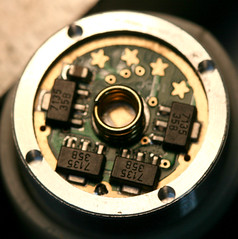 before & after
before & after 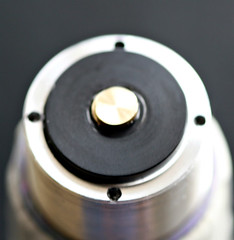
(above photos c/o Photonfanatic)
Every rose has it's thorn
The multi-mode driver used in this build uses a technology known as Pulse-Width Modulation (PWM). Unfortunately PWM has a few side effects when using the light in any mode other than high. The first is the fact that the light flickers at some (high) frequency. The second problem is that a PWM system can cause an audible "whine" (as recorded in this video). I cannot notice any flicker however I do hear the whine. The sound is barely noticeable in low but readily apparent in medium, assuming a quiet environment (like your basement, etc.)
The only other possible area of concern is the heat output of an LED like the XM-L driven at 2.8A. When the light is on high, it will warm up in no time. After approx. 1min, the head will heat up to an uncomfortable level. This is normal for hi-powered handhelds and you will often see a warning sticker on the heads. Having foreseen the need to cool this emitter, Photonfanatic made the host longer then his usual 18650 hosts (120mm vs. 100mm) and housed the emitter and driver in a beefy Al heatsink. While it is hard to imagine a more attractive host, MokuTi or simply, titanium, is not the best material for head-dissipation... . In terms of real-world usage, Medium (@1A output and moderate heat emission) is the more useful mode, with high being only necessary in very rare circumstances (like showing the light off... :biggrin: ).
to be continued...

